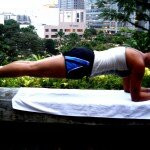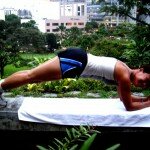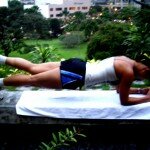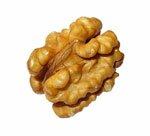Improve your Core Strength: The Plank
Posted on | May 31, 2010 | No Comments
Some of the most important muscles to keep in tip-top shape are those of your torso. They have been popularly named “core” muscles as they are located in the centre of your body and play a core role in most biomechanical actions you do.
Having strong core muscles keeps your back healthy, they hold your entire body upright, improve your balance, stabilize your torso whilst your limbs are working and enable you to put more power into leg and arm movements. If you allow your core muscles to become weak, your whole body can suffer as other areas have to compensate during movement. Often a weak core is the catalyst for classic “bad back” pain and can cause injuries to occur in the neck, shoulders and knees.
The core muscles don’t just include your abdominals, your back, hips and pelvic floor muscles are also used to stabilize with a total of 29 muscles involved during stabilisation. Many of your core muscles can’t be seen (and not just because they have a thick layer of fat over them!) but because they’re buried underneath other muscles. For example, one of the most important stabilizing muscles that can never be seen is the transverse abdominis which is permanently hiding underneath your rectus abdominis (which is ‘the six-pack muscle’). The transverse abdominis is always working hard to keep your posture upright and protecting many vital internal organs.
To improve your core stabilization, one of the best strengthening exercises you can do is called The Plank. During this exercise the primary muscles used are abdominals (rectus abdominis, obliques), transverse abdominis and erector spinae (lower back muscles), however just about your entire body gets a work out.

Correct Plank position
- Begin lying on your stomach with your elbows on the ground directly under your shoulders.
- Tuck toes under and lift your body up so that it’s in a completely straight line.
- Ensure your head is in line with your body, squeeze your glutes (bum muscles) then tighten and pull your belly button towards your spine which will engage your deep pelvic floor muscles.
- Holding this position for as long as you can.
DON’T CHEAT: Make sure your bottom is not pointing up towards the sky – you must be in a straight line.

This is incorrect! You must be in a straight line.
Initially – this can be quite a difficult exercise. If you are finding it too hard a variation can be done on your knees. The same principles apply, except instead of being on your toes simply have your knees on the ground.

Easier option on your knees
Harder variation: If you can master holding a plank for over 1 minute – try lifting 1 leg up on the ground to further challenge your core muscles.

Lift 1 leg
Importantly, if you’re active and want to improve the power and function of what you’re doing, strengthening your core muscles can vastly improve your function and reduce the likelihood of injury.
Tags: ab exercise > core strength > how to do the plank > how to improve core strength > improve balance > rectus abdominis > The Plank > transverse abdominis
Comments
Leave a Reply
You must be logged in to post a comment.




